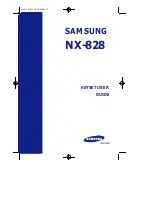
Section 3: Operating Procedures
11/27/18
STB1560, STB1572, STB1584 & STB1596 Snow Trip Blade 301-493M
16
Pre-Start Checklist
Hazard control and accident prevention are dependent
upon the awareness, concern, prudence, and proper
training involved in the operation, transport, storage, and
maintenance of the Snow Trip Blade. Therefore, it is
absolutely essential that no one operates the Snow Trip
Blade unless they are age 16 or older and have read, fully
understood, and are totally familiar with the Operator’s
Manual. Make sure the operator has paid particular
attention to:
Perform the following inspections before using your
Snow Trip Blade.
General Safety Information
Refer to Figure 1-1 on page 9:
CAUTION
!
To prevent serious injury:
Always check that all hardware is where it should be and
tightened before using the Snow Trip Blade. The moldboard
can fall off if slotted nut (#3) and cotter pin (#4) are missing.
•
Do not let children operate the attachment.
•
Do not allow anyone to operate this attachment who
has not been properly trained in its safe operation.
•
Never allow passengers on the tractor or carry a rider
on the attachment.
•
Always dress to stay warm in cold weather. Never
allow your body or extremities to become too cold. If
you are getting cold, go inside to warm-up before
continuing.
Operating Checklist
4
Check
Page
Read & follow all safety rules & safety decals carefully.
Refer to “Important Safety Information”
.
1
Make sure all guards and shields are in place.
Refer to “Important Safety Information”.
1
Read & follow hook-up & preparation
instructions.
Refer to “Section 1: Assembly & Set-up”.
Read & make all required adjustments.
Refer to “Section 2: Adjustments”.
Read and follow all operating procedures.
Refer to “Section 3: Operating Procedures”.
Read & follow all maintenance instructions.
Refer to “Section 5: Maintenance &
Lubrication”.
Read & follow all lubrication instructions.
Refer to “Lubrication Points”.
Check the Snow Trip Blade initially and
periodically for loose bolts and pins. Refer to
“Torque Values Chart”.
Section 3: Operating Procedures
•
Always exercise safety, courtesy, and common sense.
Be aware of pedestrian and vehicle traffic. Check blind
spots before moving equipment. Move snow during
low-traffic hours.
•
Make sure all safety labels are in their proper location
and in good readable condition before operating.
•
Keep blade properly attached to the power equipment
when in use.
•
Keep hands, feet, hair, and clothing away from moving
parts and pinch points.
•
The Snow Trip Blade is designed primarily for moving
snow. It may also be used to move small amounts of
light aggregate materials such as pea gravel, grain,
and loose soil. The blade must be locked to do so. See
use the blade to move undisturbed soil, heavy
materials, gravel, rocks, or similar items.
•
Protect against equipment falling unexpectedly. Lower
blade to ground or securely block blade up with blocks
before servicing or working under and around the unit.
•
Do not alter the Snow Trip Blade in any manner.
•
Use the Snow Trip Blade for its intended purpose only.
•
Always wear seat belt when moving.
•
Make sure controls are all in neutral position before
starting the tractor.
•
Do not move snow at high speeds. High speeds can
result in sudden loss of control leading to damaged
property, equipment, and bodily harm.
•
Do not hit solid objects with the blade. Mark locations
of all curbs, hydrants, stumps, and other obstructions
in the area that can damage the equipment and
property when hit.
Pre-Operation Inspection
1.
Shut tractor off. See
on page 8. Be sure to relieve all pressure in the
hydraulic lines and wait for all moving parts to come
to a complete stop before dismounting from the
tractor.
2. Visually check for excessive wear and loose parts.
Replace worn, damaged, or cracked parts with
genuine Land Pride parts.
3. Inspect all connections for leaks. Tighten any
connections that are loose.
4. Inspect hydraulic hose for pinch points that can
damage the hose during operation and for sufficient
length and equipment clearances. See
5. Check all controls and operating functions of the
tractor.
















































